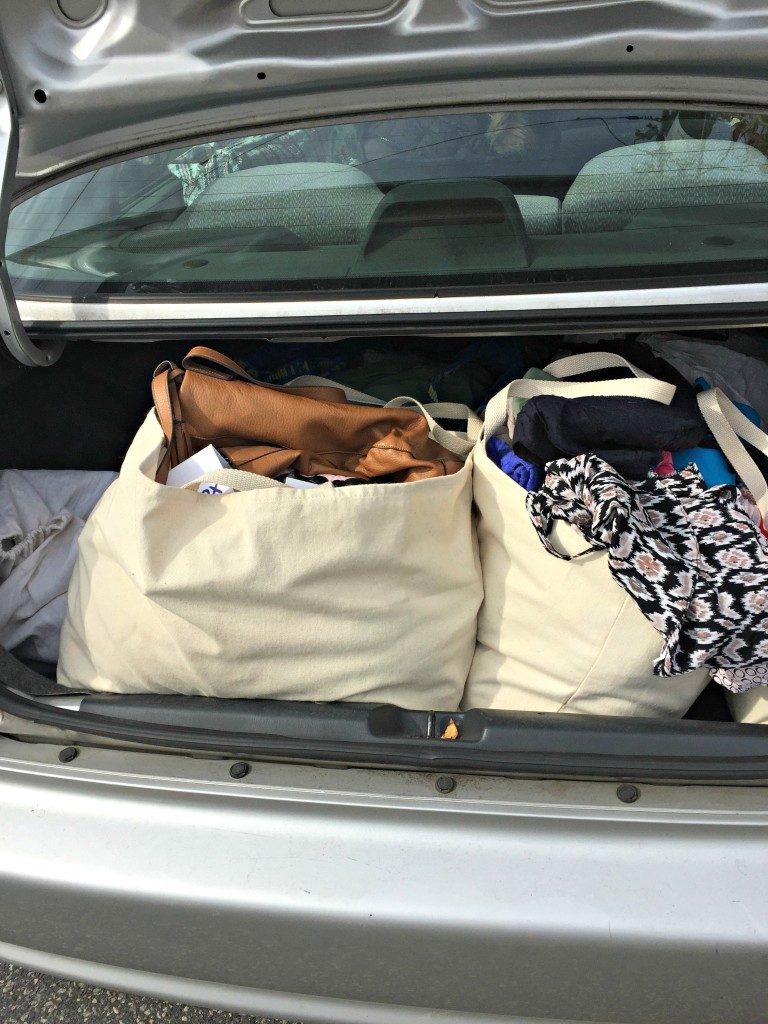Here’s Why I Stopped Donating All of My Clothes to the Thrift Shop
I’m a hardcore thrift shopper. This isn’t news to anyone. I even wrote an entire book on how to thrift shop. And as much as I love secondhand shopping, I also make sure to donate my clothes as well, like I did in a major closet purge a few years ago.
But over the past two, maybe three, years I stopped donating all of my clothes there. Sure, I still drop a few bags off every now and then, but all of my clothes? Nope, I’ve stopped doing that.
While we’d all like to think we’re doing the eco-friendly and charitable thing by donating our clothes to secondhand stores, it doesn’t always work out that way.

My typical donation process would involve doing one or two major closet clean outs a year and then donating bags upon bags to the nearest thrift store.
But after reading this article on what really happens to your clothing donations, I started rethinking my plan.
I knew the actual amount of thrift store donations that actually gets sold was pretty low, but I was still shocked to read that on average it’s just about 20 percent. Yes only 20 percent of the clothes you donate are actually resold in the stores. Shops are just overflowing with donations and/or the donations just aren’t sellable.
So now when I have clothes donations, I do things a bit differently.
[bctt tweet=”Here’s Why I Stopped Donating All of My Clothes to the Thrift Shop” username=”PatriceJWill”]
One major change I’ve made is that I take inventory of my closet at least every quarter. So four times a year I go through my clothes, shoes and accessories to determine what I no longer wear, need or love. Doing this on a smaller scale {versus just once a year} makes the process easier and the amount of bags I have to lug around much lighter.
But one of the biggest differences is where to donate. Some of my clothes are a bit dressier, so I make it a point to research churches and even career centers that may be in need of those items. If you have children’s clothing, you can also do this with some schools or daycares in your area. Always call in advance to be sure they’re currently accepting donations and specifically ask what they’re in need of.

And I know some people get annoyed at the process of selling their clothes to Buffalo Exchange or Beacon’s Closet, but their buyers know what tends to sell. So if I have a garment that’s really trendy or a classic piece, then I’ll go there and sell my items for a few bucks. It’s never a lot of money, but I know that since they’re out to make a profit, they’ll only accept stuff that has a high potential to sell and find a good home. Check this post out if you want tips on how to sell your clothes.
Of course I’m not telling you to stop donating to thrift shops. I still plan to make occasional donations, especially if I know it’s a garment that has a high potential for being sold {great quality, brand, etc.}. I’m just sharing a few tips that can make the donation process a bit easier and more thoughtful.
The post Here’s Why I Stopped Donating All of My Clothes to the Thrift Shop first appeared on Looking Fly on a Dime.